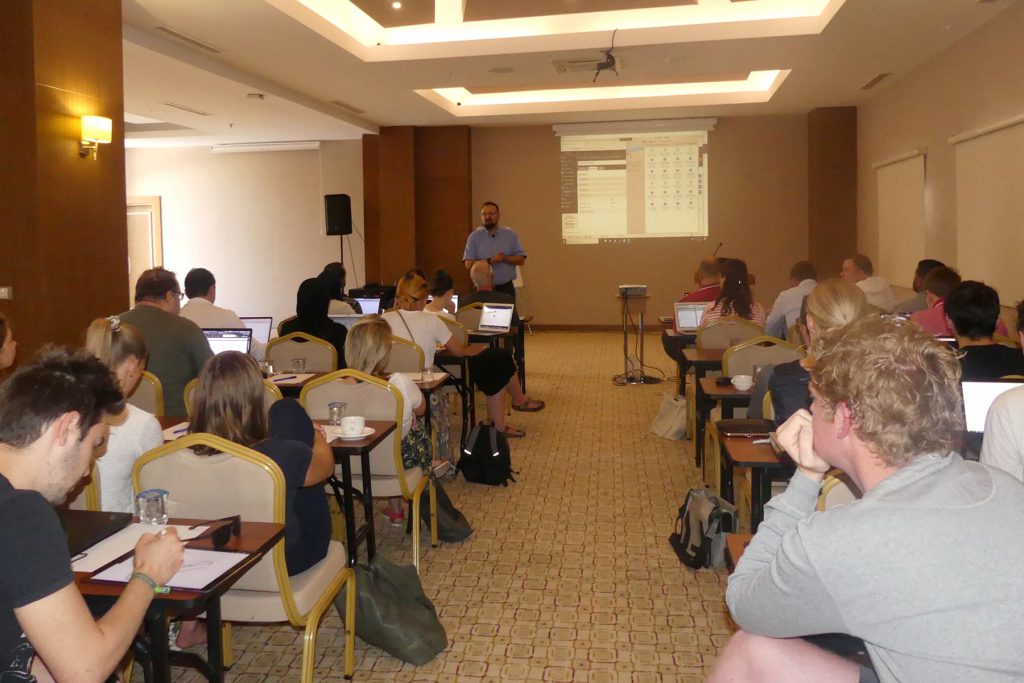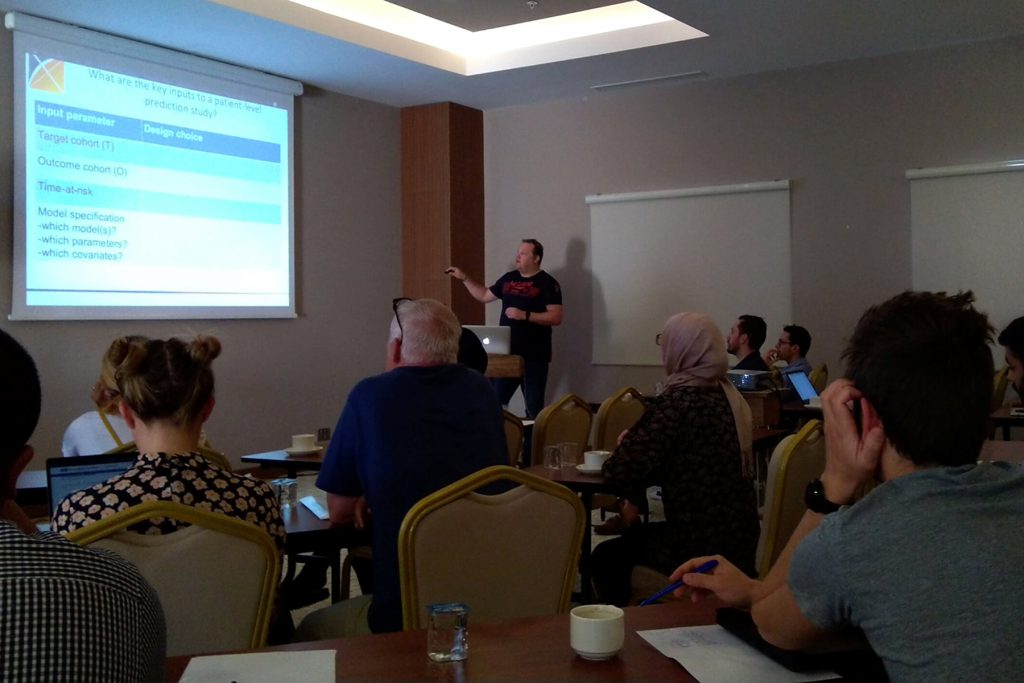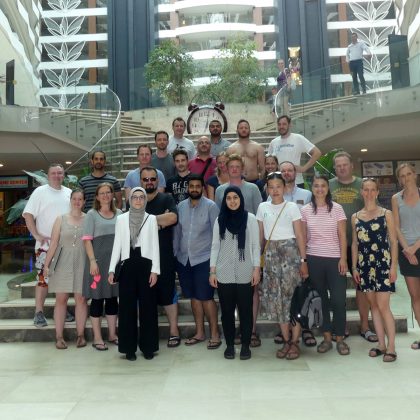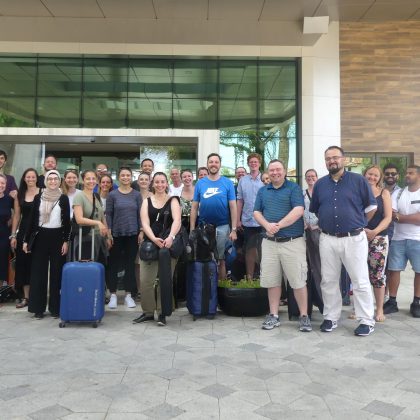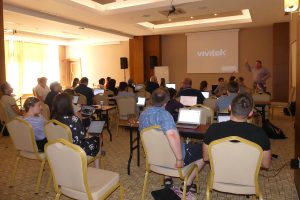
Patrick Ryan leads a discussion with the talented researchers from the Center for Surgical Sciences.
Patrick Ryan and Peter Rijnbeek joined department members from the Denmark Center for Surgical Science (CSS) June 15-17 for an intensive and successful three-day workshop to validate the OHDSI infrastructure at CSS and to study important questions that impact healthcare.
“It was an inspiring collaboration, because these practicing clinicians have real questions that directly impact the lives of their patients and provide a real opportunity to meaningfully improve care,” Ryan said. “It was exciting to see how the OHDSI open source toolkit, atop the OMOP common data model, could seamlessly work with the Danish national register data and directly address the teams’ questions to produce reliable real-world evidence that they will be able bring back into clinical practice.”
Participants were introduced to the principles of cohort definitions using ATLAS, the population-level estimation and the patient-level prediction methods during the workshop. The participants were then divided into groups and collaborated with OHDSI experts for a multi-step process. After shaping important clinical questions, the groups performed relevant analyses using OHDSI tools and validated the hypotheses behind the questions.
The result was inspiring to all involved. The collaboration went from forming questions to producing four scientific papers that are about to be submitted for publication to peer-reviewed journals. Iannis Drakos shared his impressions of the OHDSI impact on his research team.
“My work is focusing on big data in health for the past 15 years,” Drakos said. “On every data-centric project I worked the challenges were always the same. No matter if it was Greece, France, UK, Germany or the Netherlands, the key factor and a reason for failure was how to bridge the gap between data science and healthcare professionals.”
“The OHDSI ecosystem provided us with the studies’ one-stop-shop that was missing,” Drakos added. “I never had a similar past experience when a community-driven framework could allow clinical researchers to focus entirely on the biomedical aspects of their work. What we achieved during a three-day workshop, where clinical researchers used the OHDSI tools to interact with OMOP CDM for the first time, was remarkable. Never before has the introduction of a new data model and analyses framework been accepted with such excitement and lack of the usual ‘resistance’ to change.”
CSS was supported in its efforts to transform the Denmark national registry data and stand up the OHDSI toolkit by Greg Klebanov, Pavel Grafkin and Eldar Allakhverdiiev from Odysseus, who also participated in the event.
Both Rijnbeek and Ryan were equally thrilled with the outcome of the retreat.
“I could never have predicted that amount of scientific output that we could produce together in three days through focus and collaboration with a shared goal to improve patients’ lives,” Rijnbeek said. “I’m really excited that we are so close to clinical care and bringing patient-level prediction into real-world practice.”
“I think the CSS retreat was a watershed moment for the OHDSI community, and it represents the best of what we can be through multidisciplinary collaboration,” Ryan said. “Together, we achieved something that couldn’t have been done alone. We went from research idea to study design to analysis execution to results interpretation, completing in three days what could have otherwise taken a couple years.”
“We demonstrated the complementary value of clinical characterization, population-level effect estimation, and patient-level prediction, and proved how a rigorous analytic framework can increase our confidence in our results,” Ryan added. “Most importantly, we collaboratively generated evidence that should promote better health decisions and better care for the patients we serve.”
“As a professor of surgery and a clinical researcher I have been working with health data through all my professional life,” said Ismail Gögenur, professor at the Denmark Center for Surgical Science. “The impact on my work by having an OMOP CDM and using the OHDSI community tools was beyond expectations. Within a year, my research group at the Center for Surgical Science managed to bring research results closer than before to clinical precision medicine services.”

